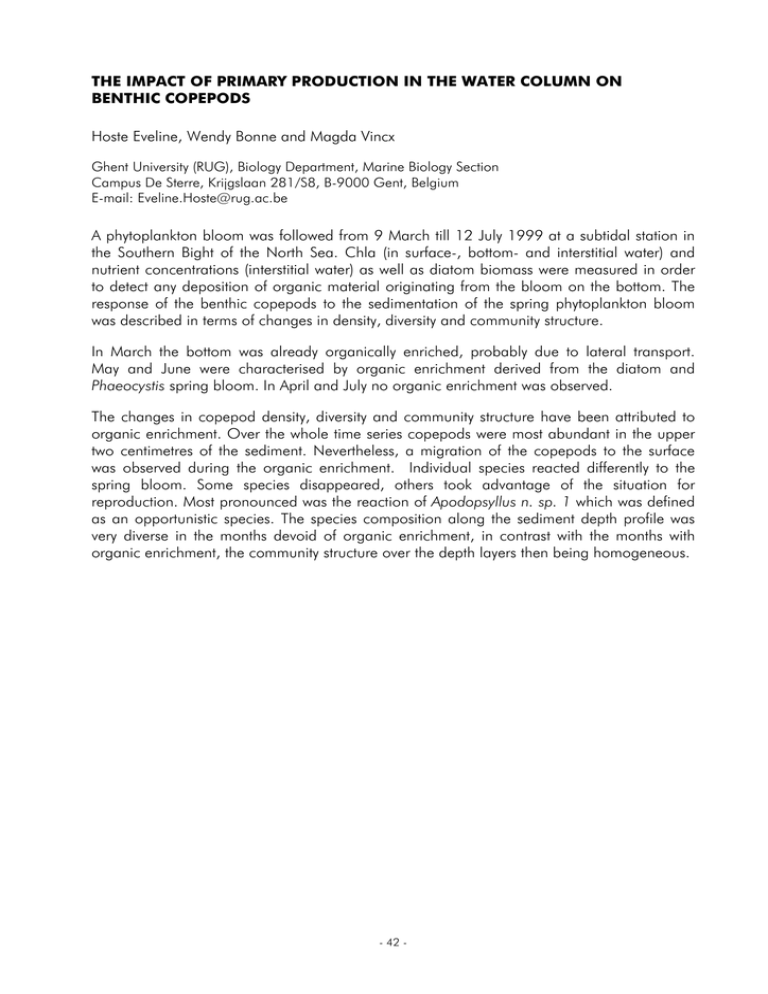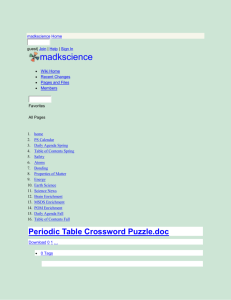THE IMPACT OF PRIMARY PRODUCTION IN THE WATER COLUMN ON
advertisement

THE IMPACT OF PRIMARY PRODUCTION IN THE WATER COLUMN ON BENTHIC COPEPODS Hoste Eveline, Wendy Bonne and Magda Vincx Ghent University (RUG), Biology Department, Marine Biology Section Campus De Sterre, Krijgslaan 281/S8, B-9000 Gent, Belgium E-mail: Eveline.Hoste@rug.ac.be A phytoplankton bloom was followed from 9 March till 12 July 1999 at a subtidal station in the Southern Bight of the North Sea. Chla (in surface-, bottom- and interstitial water) and nutrient concentrations (interstitial water) as well as diatom biomass were measured in order to detect any deposition of organic material originating from the bloom on the bottom. The response of the benthic copepods to the sedimentation of the spring phytoplankton bloom was described in terms of changes in density, diversity and community structure. In March the bottom was already organically enriched, probably due to lateral transport. May and June were characterised by organic enrichment derived from the diatom and Phaeocystis spring bloom. In April and July no organic enrichment was observed. The changes in copepod density, diversity and community structure have been attributed to organic enrichment. Over the whole time series copepods were most abundant in the upper two centimetres of the sediment. Nevertheless, a migration of the copepods to the surface was observed during the organic enrichment. Individual species reacted differently to the spring bloom. Some species disappeared, others took advantage of the situation for reproduction. Most pronounced was the reaction of Apodopsyllus n. sp. 1 which was defined as an opportunistic species. The species composition along the sediment depth profile was very diverse in the months devoid of organic enrichment, in contrast with the months with organic enrichment, the community structure over the depth layers then being homogeneous. - 42 -



